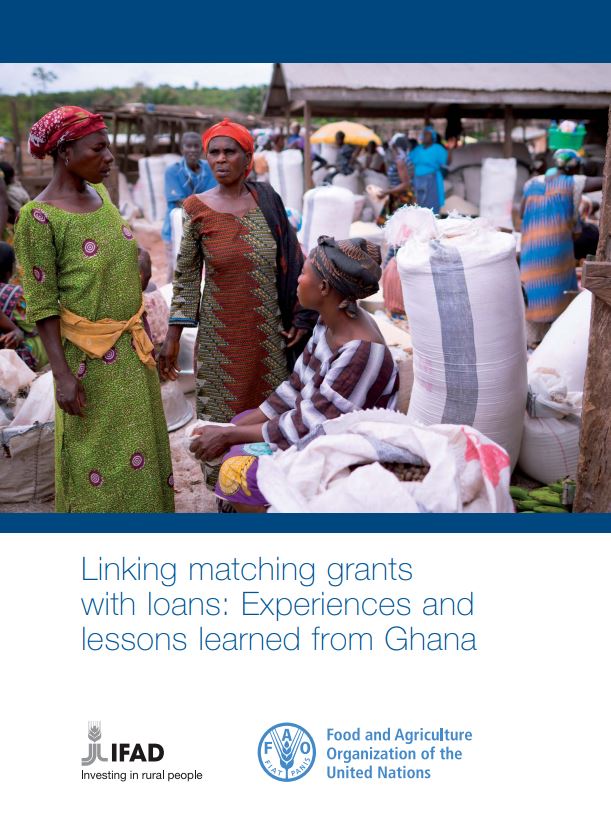Linking matching grants with loans: Experiences and lessons learned from Ghana
Linking matching grants with loans: Experiences and lessons learned from Ghana
September 2014
Matching grants (MGs) are used increasingly by multilateral and bilateral institutions, including the International Fund for Agricultural Development (IFAD) and the World Bank, to cofinance productive assets and investments. Although confined initially to investments with clear public good characteristics, their use has spread. They finance a broad array of assets and productivity-enhancing technologies for groups, companies and individuals, benefiting the private sector directly with clear private goods characteristics. MGs are used as a short-term financing instrument to promote diffusion of technologies and enable target groups to carry out productivity-enhancing investments, compensating for the limited availability and high costs of term finance. At times, MGs incorporate a “crowding in” mechanism to attract financiers by sharing the risks and increasing the effective collateral value of the asset being financed. They are also used to support innovations that, by their nature, are more risky and less likely to attract loan finance. Despite their appeal as a relatively simple instrument to address access to finance constraints in the short run, there are several risks, which can limit their effectiveness and impact. When poorly designed and poorly implemented, MGs can distort and crowd out private and public investments.
